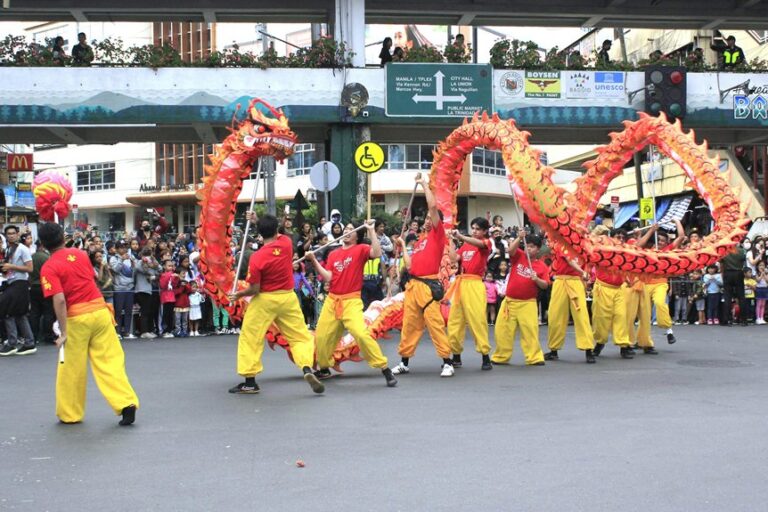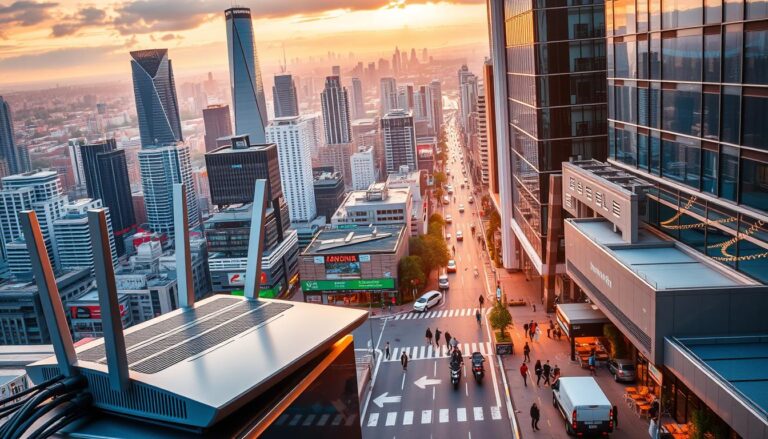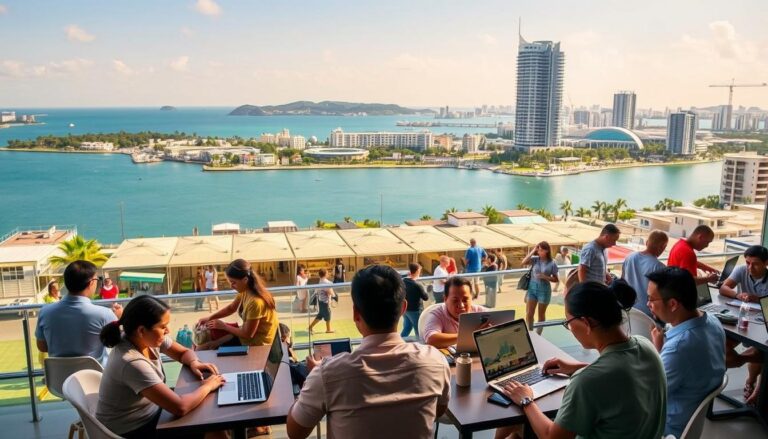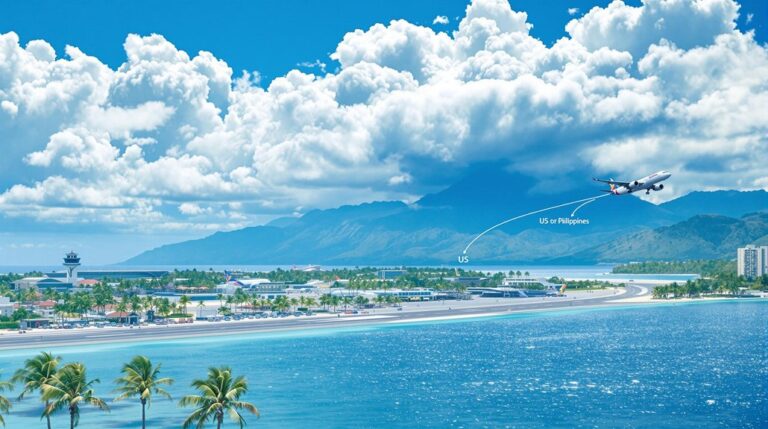Best Festivals Near Your Work and Stay in the Philippines
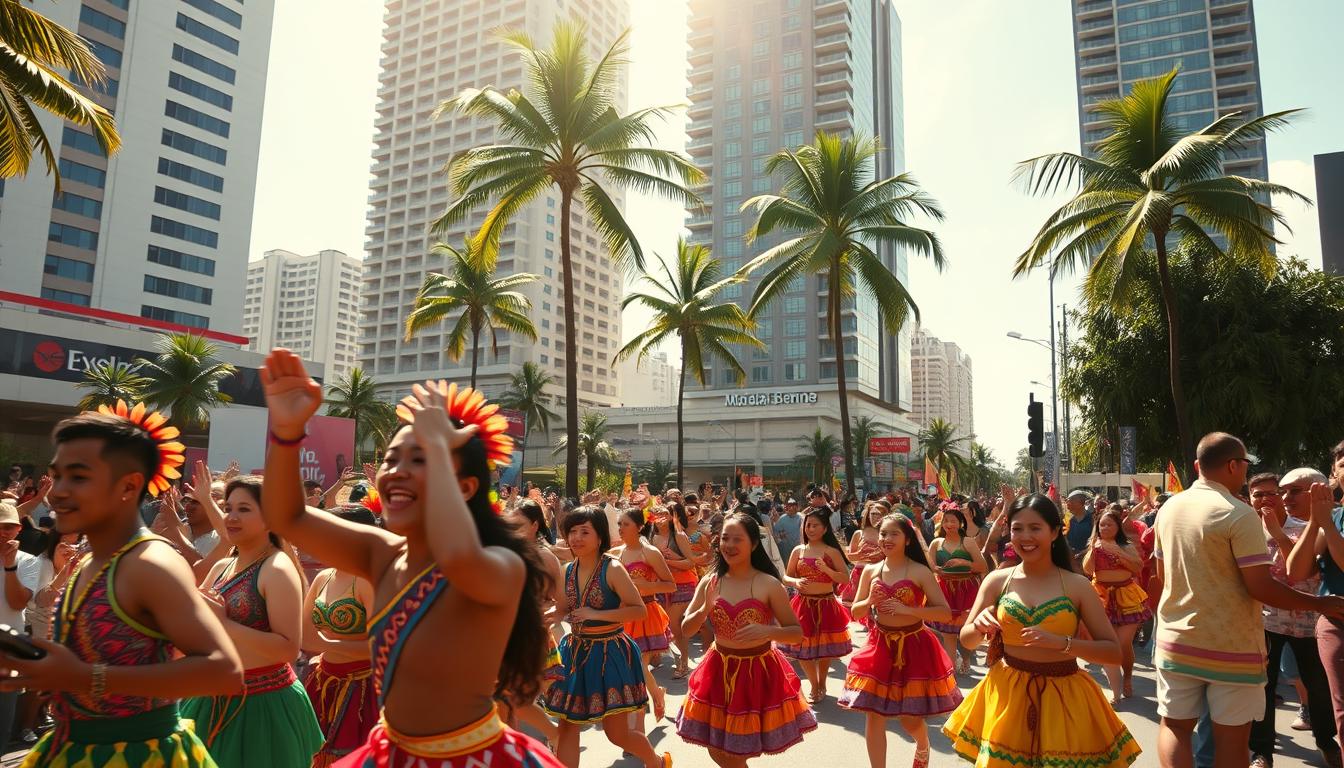
This Southeast Asian nation is famous for its stunning natural beauty and the local passion for celebration. Throughout the year, numerous holidays and vibrant events showcase the history and creativity of the local communities.
For travelers and remote workers, these cultural celebrations offer convenient opportunities to experience authentic traditions. Many happen near popular urban centers and tourist destinations. You can participate without extensive travel planning.
The culture includes a unique blend of Spanish-Catholic, indigenous Filipino, and Asian influences. These events are genuine expressions of heritage rather than just tourist attractions. They feature street dancing, elaborate costumes, and delicious local food.
From religious processions to harvest thanksgiving events, there’s incredible diversity. The Filipino people welcome visitors to join their joyful celebrations with open arms.
Key Takeaways
- The Philippines hosts vibrant celebrations throughout the entire year
- Many events occur near major cities and tourist areas
- Festivals showcase a unique blend of cultural influences
- These celebrations feature dancing, costumes, and local cuisine
- Locals warmly welcome visitors to participate
- Events range from religious to harvest-themed celebrations
- Flexible scheduling accommodates work and travel plans
Introduction to Philippine Festivals
Throughout the islands, communities come alive with spectacular events that honor tradition and unity. These gatherings represent more than just entertainment—they are vital expressions of cultural identity.
Overview of Celebrations
Filipino events are grand, colorful, and incredibly lively. They draw visitors from around the world while providing significant economic benefits to local businesses.
Artisans and performers use these occasions to showcase their talents. This helps preserve traditional skills that might otherwise fade away.
Why Festivals Matter
These celebrations serve as the nation’s pulse. They express collective spirit through heritage, spirituality, and community bonding.
The events create welcoming atmospheres where locals and visitors celebrate together. This breaks down cultural barriers and creates unforgettable experiences.
| Festival Type | Main Focus | Typical Location | Key Features |
|---|---|---|---|
| Religious | Patron Saints | Towns & Cities | Processions, Masses |
| Harvest | Agriculture | Rural Areas | Thanksgiving, Feasts |
| Cultural | Heritage | Various Regions | Dancing, Costumes |
| Historical | Milestones | Specific Cities | Reenactments, Parades |
The entire archipelago becomes a year-round celebration destination. From solemn processions to vibrant street parties, there’s always something happening.
Discovering the Unique Culture of Filipino Festivals
What truly sets Filipino celebrations apart is their remarkable fusion of diverse cultural influences woven into every performance. The visual spectacle begins with elaborate costumes that blend indigenous patterns with modern creativity. Vibrant colors and intricate beadwork tell stories of heritage and community pride.
At the heart of each festival lies dynamic street dancing accompanied by powerful rhythms. Traditional drums merge with contemporary brass bands, creating energetic soundscapes. The choreography often depicts historical events or spiritual themes through expressive movement.
The infectious energy comes from enthusiastic participation by locals who welcome visitors as honored guests. Body painting and face decoration transform participants into living artworks. This creates an atmosphere where everyone feels included in the celebration.
These events turn ordinary public spaces into extraordinary cultural stages. The boundary between performers and audience members often blurs, creating truly immersive experiences. Each festival offers a unique window into the nation’s creative spirit and communal warmth.
Historical and Religious Significance of Festivals
Modern Filipino festivities carry centuries of tradition within their vibrant performances. These events blend indigenous customs with colonial influences that shaped the nation’s identity.
Colonial Influences and Traditions
Spanish missionaries cleverly merged Catholic traditions with local celebrations. This created unique hybrid events that honored both systems. Many festivals began as tribute to patron saints during colonial time.
The Ati-Atihan festival stands as the grandfather of celebrations in this country. It established patterns that influenced countless other events nationwide. This ancient gathering maintains its spiritual essence while adapting to modern times.
“Our festivals are not just parties—they are living history lessons that connect us to our ancestors.”
Religious devotion remains central to these gatherings. Communities express gratitude through mass processions and elaborate rituals. The Flores de Mayo originated as a tribute to the Virgin Mary during Spanish rule.
| Festival Name | Historical Origin | Religious Focus | Modern Significance |
|---|---|---|---|
| Ati-Atihan | Pre-colonial indigenous celebration | Santo Niño devotion | Pattern-setter for other festivals |
| Flores de Mayo | Spanish colonial era | Virgin Mary tribute | Month-long floral offerings |
| Araquio Festival | Christian-Muslim conflicts | Religious spread celebration | Theatrical historical reenactments |
These celebrations preserve colonial-era traditions while adapting them for contemporary audiences. They serve as bridges between past and present, keeping history alive through joyful participation.
Best Festivals Near Your Work and Stay in the Philippines
Major Philippine cities serve as perfect hubs for accessing the country’s most spectacular celebrations. Strategic planning lets you experience incredible events without extensive travel from your base location.
Top Picks for a Memorable Experience
The Dinagyang festival in Iloilo City attracts over a million visitors each January. This spectacular event earns its title as the “Queen of All Philippine festivals” with vibrant street performances.
Manila offers convenient access to several major celebrations. The Wanderland Music and Arts festival brings international acts to the capital region. Nearby Pampanga hosts the breathtaking Giant Lantern festival from December to January.
| Festival Name | Location | Best Time to Visit | Key Highlights |
|---|---|---|---|
| Dinagyang Festival | Iloilo City | January | Street dancing, cultural shows |
| Hot Air Balloon Fiesta | Clark, Pampanga | February | Aviation sports, balloon displays |
| Wanderland Festival | Metro Manila | March | Music concerts, art installations |
| Giant Lantern Festival | San Fernando | December-January | Illuminated displays, competitions |
Insider Tips for Locals and Travelers
Book accommodations months ahead for popular festivals. Hotels near event venues fill quickly, especially during peak seasons.
Connect with local tourism offices through social media for real-time updates. They provide schedule changes and special activities information.
Arrive early to secure prime viewing spots for parades and performances. Comfortable shoes are essential for street dancing participation.
Vibrant Street Dancing and Parade Celebrations
The rhythmic heartbeat of Philippine celebrations pulses through spectacular street dancing and parade traditions. Entire communities transform into moving theatrical performances that flow through city streets for hours. These events showcase months of preparation by schools, companies, and community groups.
Choreographed routines and elaborate costumes display regional cultural pride. Performers push creative boundaries in competitive events that award prestigious honors. The dances often dramatize historical events or religious narratives through symbolic movements.
Ati-Atihan Festival features tribal-inspired movements with rhythmic drum beats. Participants wear indigenous costumes and body paint honoring ancient origins. The celebration’s energy pulls visitors into the dancing crowds alongside friendly locals.
Parade floats decorated with flowers and lights complement the street dancing spectacle. Performers demonstrate remarkable stamina dancing from sunrise to sunset. Elder community members teach traditional steps to younger generations, ensuring cultural traditions continue.
These vibrant parades create unforgettable experiences where everyone participates. The infectious joy turns ordinary streets into extraordinary cultural stages.
Savoring Local Delicacies and Festival Foods
Beyond the vibrant dances and colorful costumes, the true soul of Philippine festivities lies in their remarkable cuisine. These celebrations transform eating into a multisensory experience where every dish tells a story.
At the Pahiyas Festival, homes become edible art galleries. Colorful produce, fresh fruits, and vibrant vegetables decorate houses alongside Kipings—leaf-shaped wafers made from glutinous rice. These decorations eventually become treats for visitors.
Must-Try Traditional Treats
The Lechon Festival dedicates entire celebrations to perfectly roasted pork. Parades feature beautifully prepared lechon dressed in creative costumes before being shared communally. This highlights how food becomes central to community bonding.
Coastal gatherings like Sinadya Sa Halaran showcase incredible seafood delicacies. Fresh catches transform into mouthwatering dishes available at every corner. Street stalls offer endless varieties of grilled meats, sweet pastries, and refreshing drinks.
Rice-based local delicacies reflect the grain’s cultural importance. From sticky rice cakes to crispy wafers, these treats appear throughout celebrations. Don’t miss regional specialties like Lucban’s Longganisa sausage.
Festival food stalls create natural meeting points where visitors and locals connect. The social aspect turns meals into shared experiences. Adventurous eaters should embrace street food culture during these vibrant events.
Immersive Experiences: Music, Art, and Performance
Beyond the expected parades, many celebrations offer deeply engaging artistic encounters. These activities transform visitors from spectators into active participants.
The Wanderland Music and Arts festival creates a carnival-like atmosphere. It showcases top local and international performers alongside art exhibitions and workshops.
For a multisensory event, the Chroma Music festival combines electronic music with spectacular visuals. Flying colored powder adds to the immersive party vibe.
The Philippine International Hot Air Balloon Fiesta provides unique aviation entertainment. Its activities include skydiving and mesmerizing balloon displays.
Cultural gatherings like the Viva Vigan festival feature theatrical comedia performances. These dramatic shows bring local history to life for audiences.
These events are crucial platforms for artistic talent. They help preserve traditions while encouraging exciting new innovations in music and performance.
| Festival Name | Primary Focus | Key Attractions | Interactive Element |
|---|---|---|---|
| Wanderland | Music & Visual Arts | Live concerts, installations | Art jamming walls |
| Chroma | Electronic Dance Music | EDM artists, light shows | Color powder participation |
| Hot Air Balloon Fiesta | Aviation & Spectacle | Balloon flights, aerobatics | Ground crew volunteering |
| Viva Vigan | Cultural Heritage | Stage drama, heritage race | Singing contests |
Seasonal Festivals: From January to December
From New Year’s celebrations to Christmas festivities, the Philippine cultural calendar provides continuous opportunities for immersion. Each month brings distinctive events that showcase regional traditions. Planning your visits around this year-long schedule ensures you never miss the excitement.
What to Expect Throughout the Year
January kicks off with massive gatherings like Ati-Atihan and Dinagyang. These iconic events set the tone for the entire year. February and March feature unique experiences like the Hot Air Balloon Fiesta.
May represents the peak time for celebrations. Flores de Mayo occurs nationwide alongside colorful events like Pahiyas. This month offers the richest cultural experiences.
June maintains summer energy with Pintados and Lechon festivals. The rainy season brings fewer major events but local fiestas continue. December closes the year with spectacular Christmas celebrations.
Most festivals span multiple days, allowing flexible scheduling. The dry season from November to May offers ideal weather conditions. This time of year provides comfortable outdoor celebration experiences.
Each day of a multi-day festival offers different activities. Planning ahead helps you catch the best moments. The archipelago’s festive spirit truly never sleeps.
Family-Friendly and Community-Centric Festivals
Many visitors discover that the most memorable aspect of these cultural events is their welcoming environment for all ages. Entire families participate together, creating joyful spaces where children dance alongside grandparents. The atmosphere remains safe and inclusive throughout the festival activities.
Traditional elements specifically delight younger participants. During Flores de Mayo, children receive cakes and sweets after church services. This thoughtful tradition creates lasting memories for families attending the festivities.

These gatherings strengthen community bonds through collaborative preparation. Neighbors work together for months organizing decorations and performances. The shared effort reinforces relationships across generations.
Large events like the Pahiyas festival attract over 100,000 people while maintaining family-friendly spaces. Designated areas allow toddlers to enjoy activities safely. Locals naturally watch out for everyone’s children during celebrations.
Beyond entertainment, these festivals serve important educational purposes. Children learn cultural traditions through immersive experiences more engaging than classroom lessons. The Saulog festival emphasizes unity, bringing diverse people together.
Community spirit ensures safety through first aid stations and family viewing areas. Locals welcome visitors into their celebrations, creating inclusive festivities where everyone feels comfortable participating regardless of age.
Experiencing Festival Traditions: Rituals and Costumes
The visual spectacle of Philippine cultural events begins with elaborate costumes and meaningful rituals. These elements transform participants into living artworks that tell stories of heritage and community pride.
At the Pintados festival, locals cover their bodies with vibrant green and blue pigments. These designs honor ancestral Visayan warriors through powerful visual connections to pre-colonial times.
The MassKara celebration features colorful smiling masks that represent resilience. This tradition turns historical hardship into joyful celebration through creative expression.
“Our festival costumes are not just clothing—they are wearable history that preserves our cultural identity.”
Religious rituals blend seamlessly with indigenous traditions in events like Ati-Atihan. Catholic masses and processions merge with tribal dancing, creating unique syncretic experiences.
| Festival | Costume Feature | Ritual Element | Symbolic Meaning |
|---|---|---|---|
| Pintados | Body painting | Warrior reenactments | Ancestral heritage |
| MassKara | Colorful masks | Street dancing | Community resilience |
| Santacruzan | Biblical costumes | Religious procession | Faith narratives |
| Ati-Atihan | Indigenous attire | Tribal celebrations | Cultural fusion |
These traditions require months of craftsmanship by skilled artisans. Hand-sewn beadwork and embroidery showcase regional artistic techniques that might otherwise disappear.
The costumes and rituals serve as living museums, preserving cultural knowledge through each festival celebration. Locals proudly maintain these traditions for future generations.
Festivals that Emphasize Local Heritage and Pride
Cultural preservation takes center stage in several Philippine festivals that transform historical traditions into vibrant public celebrations. These events serve as living museums where communities proudly showcase their unique identities.
The Viva Vigan festival brilliantly preserves ancestral architecture through week-long activities. Locals and visitors alike appreciate the historical significance of this charming city.
Agricultural heritage shines during the Pahiyas celebration. Elaborate produce displays honor farming traditions in Quezon province. This town event celebrates rural livelihoods with creative flair.
Ancient warrior traditions come alive through Pintados’ symbolic body painting. The festival connects modern locals to their Visayan ancestors. Similarly, Araquio preserves Tagalog literary traditions through theatrical performances.
These heritage-focused gatherings balance preservation with evolution. They maintain core traditions while incorporating contemporary elements. This approach keeps celebrations relevant for new generations.
The Saulog festival demonstrates how religious devotion intertwines with regional pride. These events effectively market cultural uniqueness while fostering community unity.
Mega Festival Experiences: From Hot Air Balloons to Lantern Contests
For those seeking extraordinary festival experiences, the Philippines offers spectacular events that transform the sky and illuminate the night. These gatherings go beyond traditional celebrations to create unforgettable visual spectacles.
Highlights of the Hot Air Balloon Fiesta
The Philippine International Hot Air Balloon Fiesta stands as Asia’s premier aviation event. This three-day gathering in Clark, Tarlac draws over 300 international pilots.
Spectators enjoy breathtaking aerial displays including skydiving and formation flying. The sky becomes an artistic canvas with paragliding demonstrations and freestyle aerobatics.
Ticket options range from affordable $8.50 economy passes to premium $110 first-class access. Premium tickets include air-conditioned lounges and exclusive viewing areas.
The Giant Lantern Festival in San Fernando, Pampanga runs from December through January. This celebration features an impressive lantern competition with prizes for original designs.
Artisans create these magnificent displays using traditional materials like paper and bamboo frames. Modern electrical components enhance the visual impact of each creation.
This giant lantern festival originated from ‘Lubenas’ religious practices where small lanterns were carried to church. Today’s monumental creations symbolize hope and Christmas spirit.
| Festival Feature | Hot Air Balloon Fiesta | Giant Lantern Festival |
|---|---|---|
| Primary Focus | Aviation Sports | Artistic Illumination |
| Key Activities | Balloon Launches, Aerobatics | Lantern Competition, Displays |
| Season | February | December-January |
| Unique Aspect | International Pilot Participation | Traditional Craftsmanship |
Both events attract massive crowds and international attention. They position the country as a destination for unique experiences that blend tradition with modern spectacle.
Tips for Festival-Goers: Safety, Culture, and Fun
Attending a major Philippine celebration requires smart preparation to maximize enjoyment while respecting local customs. These vibrant gatherings attract enormous crowds, with events like Dinagyang drawing over a million participants.
Proper planning ensures you experience the full energy safely. Follow these practical guidelines for an unforgettable adventure.
Safety and Crowd Navigation Tips
Arrive early to secure prime viewing spots before street parades begin. Wear comfortable shoes for extended standing and potential dancing.
Keep valuables in waterproof bags during events like the Lechon festival where water dousing targets visitors. Stay hydrated in the tropical heat and know medical station locations.
Establish meeting points with your group in case you get separated in large crowds. Download offline maps since cellular service can be overwhelmed.
| Festival Type | Essential Gear | Safety Priority | Crowd Strategy |
|---|---|---|---|
| Water Events | Waterproof bags, ponchos | Electronics protection | Peripheral positioning |
| Religious Processions | Modest clothing | Respectful distance | Churchyard viewing |
| Street Dancing | Breathable fabrics | Hydration packs | Early arrival |
| Multi-Day Events | Sunscreen, first aid | Pace management | Alternate day attendance |
Cultural Etiquette and Participation Advice
Locals genuinely welcome visitor involvement in celebrations. Don’t hesitate to join dancing or cheering when invited.
Respect religious ceremonies by maintaining quiet behavior during masses. Ask permission before photographing sacred rituals.
Learn basic Filipino phrases like “Salamat” (thank you) to enhance interactions. Your respectful participation creates meaningful connections.
Book accommodations months in advance since hotels fill quickly. Connect with tourism offices on social media for real-time schedule updates.
These preparations ensure you fully enjoy the incredible energy of Philippine festivals while creating positive memories with community members.
Planning Your Festival Adventure: Stay, Travel, and More
Organizing your festival journey requires strategic thinking about accommodations, transportation, and timing. Early planning ensures you secure ideal lodging and create seamless travel routes.
Book accommodations months in advance for popular events. Options range from budget-friendly hostels to comfortable condos with kitchenettes. Consider locations like Tely’s Bed & Breakfast in Iloilo or a condo in Pampanga.
Research transportation between city centers and festival venues. Domestic flights connect islands, while buses serve nearby destinations. Local options include jeepneys and tricycles.
Create flexible itineraries that combine multiple celebrations. This approach maximizes cultural experiences during peak months like January or May.
| Planning Aspect | Key Consideration | Recommended Timeline | Budget Range |
|---|---|---|---|
| Accommodation | Proximity to venue | 3-6 months ahead | $20-150/night |
| Transportation | Inter-city connections | 2-3 months ahead | $10-100 per trip |
| Festival Research | Date verification | 1-2 months ahead | Free-$100+ tickets |
| Packing Essentials | Weather preparation | 2 weeks ahead | $50-100 supplies |
Pack comfortable walking shoes and weather-appropriate clothing. Include waterproof bags and portable chargers. Small peso denominations help with street vendors.
Build flexibility into your travel plans. Schedules may change, and spontaneous opportunities often arise. This approach ensures you fully enjoy each place you visit.
Navigating Festival Crowds and Local Insights
Navigating the energetic crowds during major events reveals the heart of Filipino hospitality and cultural sharing. Every corner becomes a spontaneous celebration space where locals eagerly welcome visitors into their festivities.

The best way to experience these gatherings is to embrace the spontaneous party atmosphere. Street celebrations transform ordinary urban spaces into vibrant community stages. Don’t be surprised when locals pull you into dance lines or share food.
Arrive early to claim prime viewing spots for parades and performances. Ask locals for recommendations—they often know hidden vantage points. Sometimes residents invite visitors to watch from their balconies.
The Filipino concept of bayanihan shines during these events. This community spirit means everyone contributes to collective celebration. Strangers become honored guests rather than outsiders.
English is widely spoken, but learning basic Tagalog phrases shows respect. Simple greetings like “Magandang araw” (Good day) open doors to deeper connections. The most authentic experiences often happen in residential areas beyond main tourist zones.
Stay flexible and follow the celebratory flow. Some of the best moments come from unexpected invitations and chance encounters. This approach turns crowded streets into opportunities for genuine cultural immersion.
Conclusion
Participating in these events offers a direct connection to the nation’s living heritage. The festivals philippines showcase represent more than entertainment—they’re authentic expressions of cultural identity that welcome everyone.
These celebrations happen year-round across the country, making cultural immersion accessible regardless of your travel plans. The warmth of local people transforms spectators into active participants.
Embrace the opportunity to step outside your comfort zone. Join street dancing, sample traditional foods, or simply absorb the celebratory atmosphere. This way of experiencing culture creates memories that last long after your visit.
Let this guide inspire your journey into the heart of Filipino celebration. The joy and community spirit you discover will likely draw you back many times. There’s no better time to start planning your festival adventure.



